Cat Birthing Box DIY
I spent hours pondering and searching for a solution for the question every cat breeder asks themselves at some point in their career, “where will my queen give birth?”. I thought of several things I use to set up a cat nesting box for my queen, but none of them fit the grand vision I had in mind.
I really wanted the cat birthing box I had to be multifunctional. I loved the idea of being able to sit in the room with my cats and kittens, relax, watch some movies, and just spend some time with these kitties. This was important as this is a great way to socialize both the mama cat and the babies, so they will be ready for their new owner when they go home.
I envisioned a large bench that I could sit on with a big comfy cushion. I wanted to be able to lift up the cushion so that I could use one side of the bench for storage and one side a place for my queen to raise her young.
After many hours of research and brainstorming, I came up with this idea that fit perfectly into everything I wanted, and the only way I could think to get it, was to create a homemade cat birthing box.
How To Build a Birthing Box For Cats
Here’s list of materials you’ll need if you want to make this birthing box for cats as well.
- IKEA Kallax Shelving Unit
- 1/2″ thick and at least 5 feet long plywood, or melamine
- 2 12″ Piano Hinges
- Paint, if you want a color IKEA doesn’t provide
- Paintbrushes if you decide to paint
- 2 Yards Marine Vinyl
- 3″ thick foam sheet for cushions (I used 24in x 72in)
- Cotton Batting
- A screwgun
- A handsaw or tablesaw
- Marking Tool
- Ruler
Here’s what I started out with.

This is the Kallax Shelving Unit from IKEA. It measures 30 3/8″ wide by 57 7/8 ” long, and costs about $89.99 if you buy it brand new. This will be the base of our bench, and birthing box.
ALWAYS check the “as-is” area at IKEA before buying something off the shelf, these are usually just floor models that they no longer need and are marked down a good percentage. They are almost always in great condition, give or take a few very minor cosmetic flaws.
I was lucky enough to have found this exact shelving unit I wanted for only $72 with tax! I got mine in the black color, however I ended up painting it pink because that’s the theme of my cat room.
Funny story about the paint actually, they couldn’t mix the color I wanted from a paint card with the paint I chose, so they just winged it and made me a “custom” color that was close enough.
When I picked this out, I did have to think about…
How Big Should A Cat Birthing Box Be?
I took into consideration how tall my queen is, she is about 15 inches tall and the shelving unit is 15 3/8″. She is able to be inside the box, with the lid down, without having to duck or crouch. Since I knew it would be tall enough for her, I had to also consider that it would be big enough width and length-wise for her and her babies.
As you can see in the picture above, the shelf has 8 compartments. In order to make one side usable as a cat birthing box, I took out the shelves on one side. Leaving 4 cubes on one side, and no cubes on the other. With the inside shelving taken out, it left me with one side that measures 27″ by 27″. This is plenty of space for my queen the have her babies and stretch up and nurse, and this will be a good starting size for the babies to wobble around. They can stay in here until they are about 5-6 weeks old and then I will give them a bigger space to explore and run around and just be kittens. I will leave the lid up so mom can jump in and out.
When assembling this from the box, just leave out the 3 boards that make up the 4 boxes on one side of the unit. If you happen to score this from the as is section in IKEA, it will be assembled already. You’ll just need to take off the top board and pull the side pieces apart. Then you can take out the boards from inside. It’s pretty easy. 🙂
Here’s a photo of what the inside looks like after I took out the shelves and painted it.
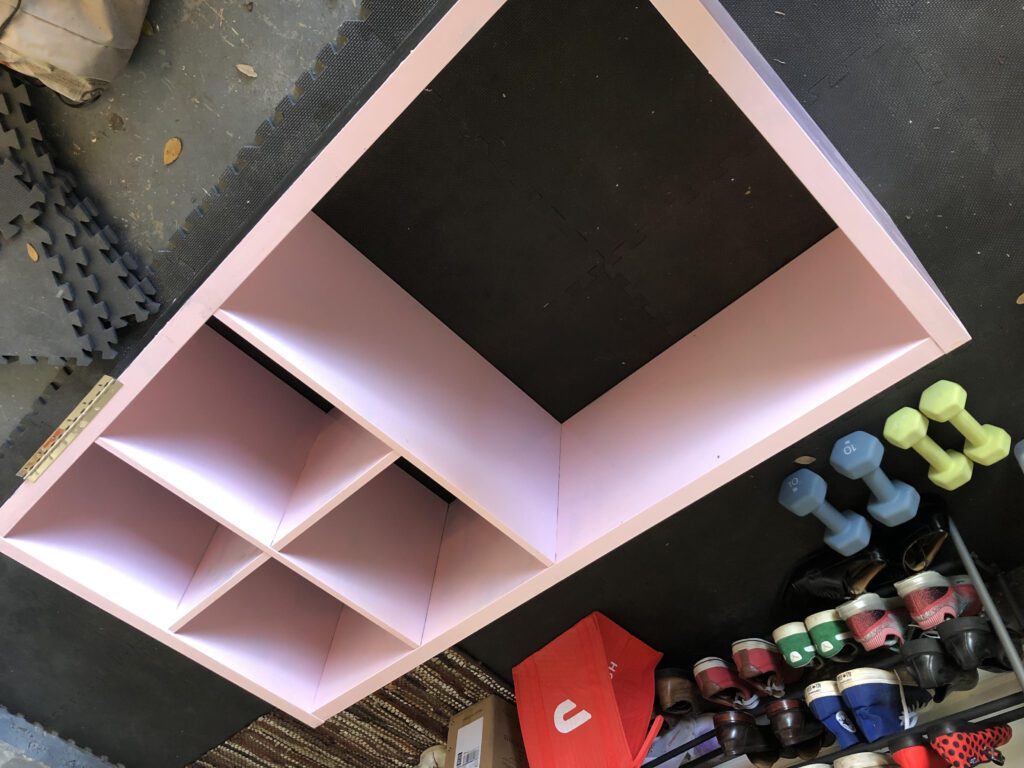
Now it gets to the good part!
Now that the shelves were taken out, and all the painting was done. It’s time to start getting to the fun stuff! This is where it finally starts coming together.
I borrowed my dad’s pick up truck to make a run to home depot for the big stuff. I bought a full sheet of melamine, which was 4′ by 8′. It was originally about $40, but since some of the edges were banged up we asked for a discount, and they gave it to us for $20! It never hurts to ask 😉 Here’s a pro tip I learned from this project:
The cashiers at Home Depot are in full control over discounts given on products that are slightly damaged so who knows, maybe if you ask they may give you a discount too! I got this melamine board that was regularly priced at $47, for $20 – just for asking for a discount since there was slight damage on the edge!

Once we got the wood home, it was time to measure and cut! For this, I borrowed my dad again. 😛 He already had a hand saw that he so kindly let me use, but Home Depot will also cut your wood for you in the store.
Since I wanted sections, we cut two pieces of wood to go on top of the bench. They measured 28 5/8″ by 30.5″ each. We added an extra half-inch onto the end of the board so that it would hang over the shelving unit and create a small lip so it could be easily lifted up.



Once we cut the lids, we put them on the base to make sure they fit the way I wanted to.
I was so happy to be able to sit criss-cross apple sauce on the top of my bench! This is the most comfortable way for me to sit and it’s hard to find deep seats that are comfortable to sit this way!
Time For Cushions!
Once we got the wood cut, it was time to start assembling the cushions. For the cushions, I ordered a piece of 3″ thick upholstery foam that was 24″ by 72″.
Since our wood pieces measure 30″, I had to Frankenstein the cushions to the correct depth. To do this, I laid the cushion across the whole bench, and cut off the parts of the cushion that hung over the edge.
Then, I had to spray the cushions with glue to stick them together. I used a spray gorilla glue, but it didn’t stick very well so I would recommend a different kind, maybe a spray adhesive specific for foam or upholstery.
Here are my Frankenstein Cushions


Once the cushions were glued together, I glued them down to the melamine board. After this, I was ready to start putting the actual cushions on. This is actually the most fun part to me. I put the entire cushion base, foam side down on top of the fabric I wanted to use for the cushions, which was a white marine vinyl that I got from Joanns.
I’m telling you, never buy anything from Joanns without a coupon. I got 2 yards for $23 using a coupon, when the regular price is $19.99 for ONE yard. If they don’t have any coupons at the time you are ready to buy your materials, trust me and just wait for one. It will save you so much money,
I chose the marine vinyl so it would be easy to clean up when kittens are in the room, or when momma has some poopy tail accidents.
I then cut the fabric to have a couple of inches extra on each side, pulling it up to the wood first to make sure I had plenty to reach to the underside of the cushion. I used a cotton batting on top of the foam, this helps to round out the shape a little bit so it doesn’t look square and boxy. Then it was time to staple the vinyl to the wood!
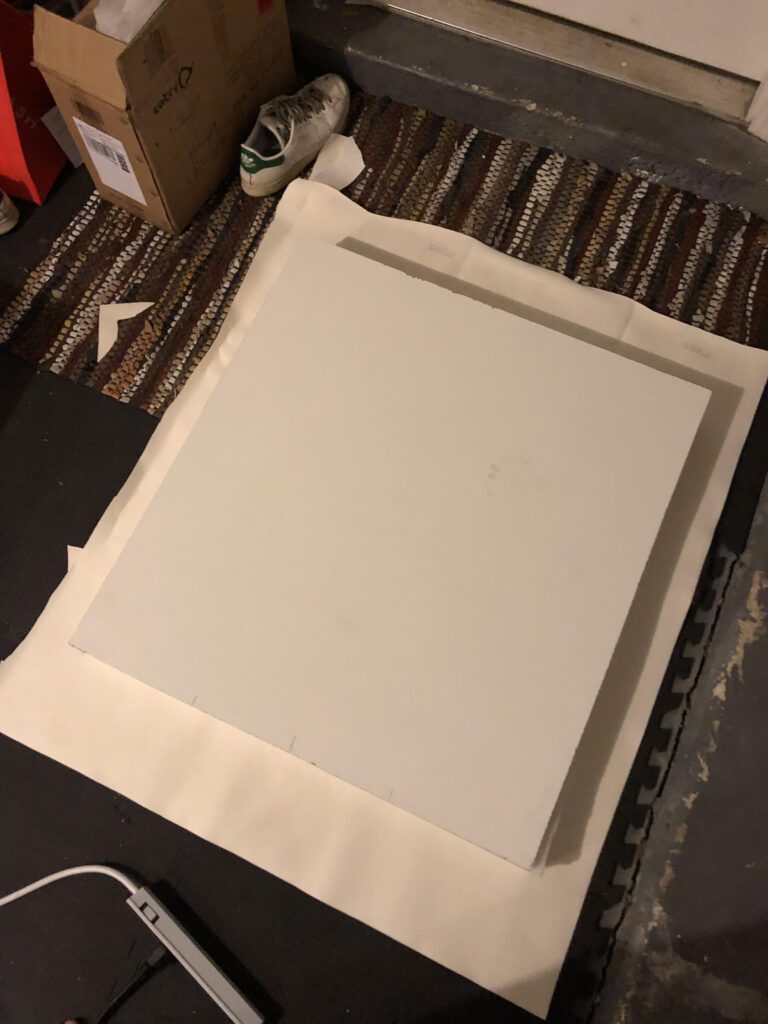

The cushions are done, and we are moving on to the very last step before our cat birthing box is finished… attaching the hinges! We used piano hinges for the cushions. I got my piano hinges from Home Depot. We first measured the wood to find the center. Once we found the center, we lined that center up with the center of the hinge. This is so the hinge sits center on the cushion.


YAY! The hinges are finally on and it’s time to move the birthing box into my cat’s room!
Here’s the final results for my Cat Birthing Box…
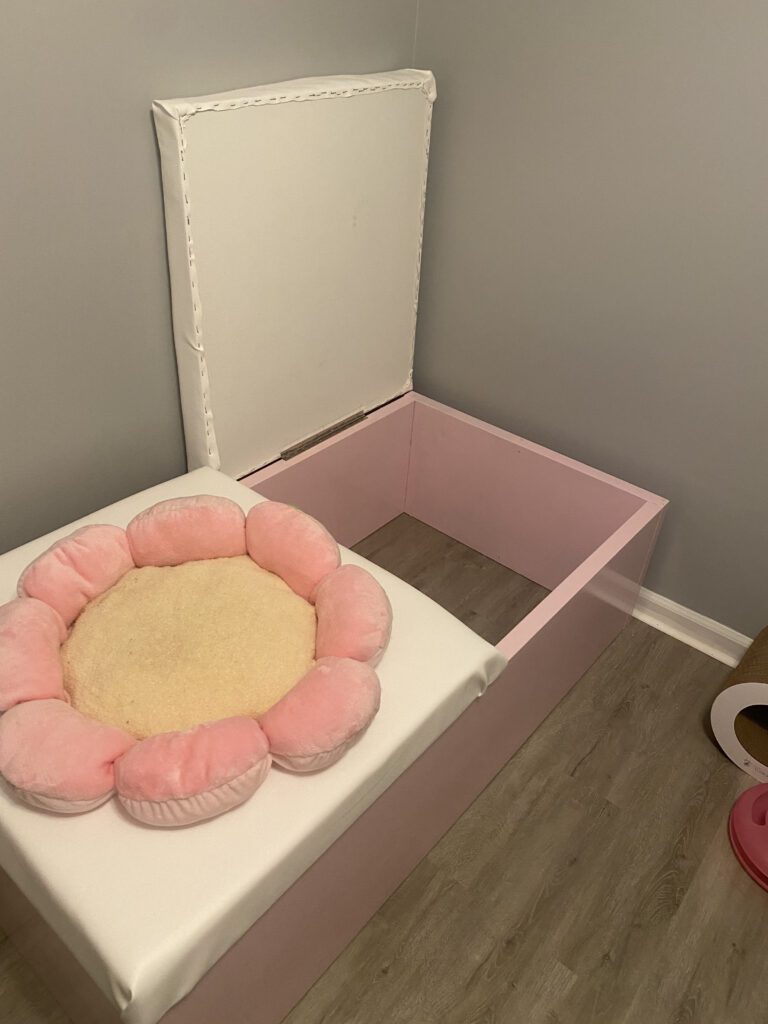


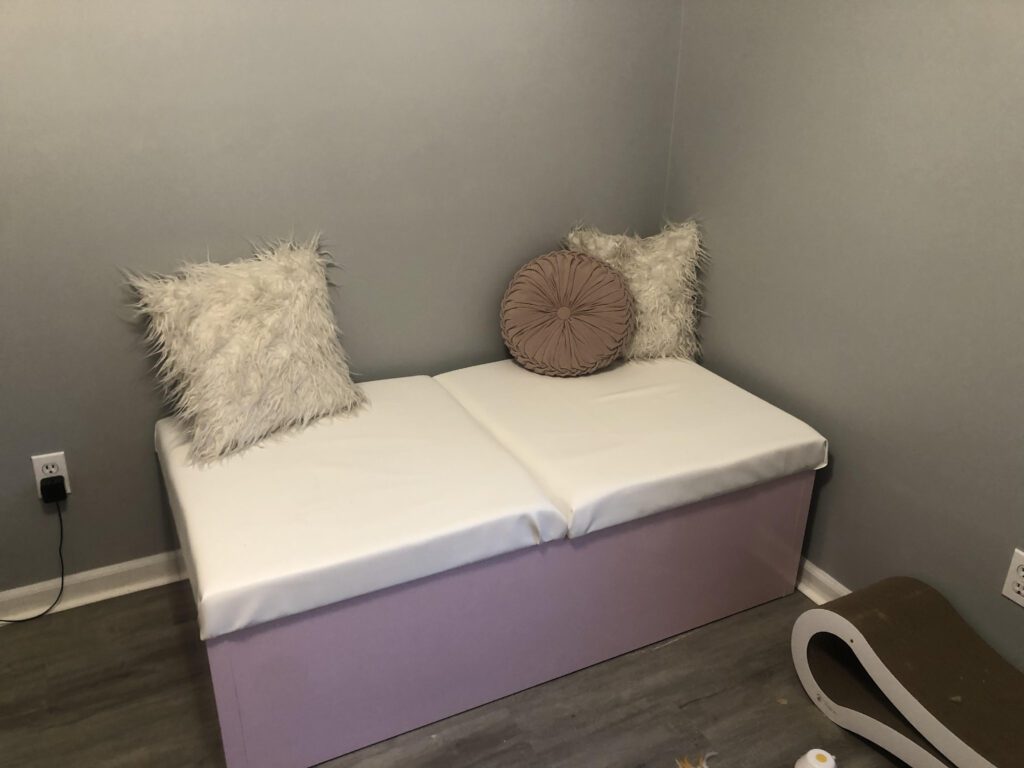
You can also add baseboards to the bottom of your box for a more built-in look, however, for budget reasons, I opted out of this option though I do think it would look very nice.
I hope you enjoyed this post about how to build a birthing box for cats! Let me know if you make this box too and leave a comment with a pic of your birthing box!
Cat Breeding for Beginners
Enroll in the Complete Guide to Pedigree Cats course! This is the #1 course for new cat breeders, you will learn all the fundamentals to being a successful, reputable cat breeder. You will work through 10 main topics:
- Introduction
- Deciding to Breed Cats
- Getting Set Up
- Caring For Your Cats
- Genetics
- Selecting Your Breeding Cats
- Mating Cats
- Pregnancy and Delivery
- Raising Kittens
- Selling Pedigree Kittens
- Kittens Going Home
Each of these topics are broken down and covered in deep depth. You will take quizzes to make sure you are understanding the topics, and do assignments that are reviewed by a real human! This is definitely the first step you’ll want to take in becoming a cat breeder.





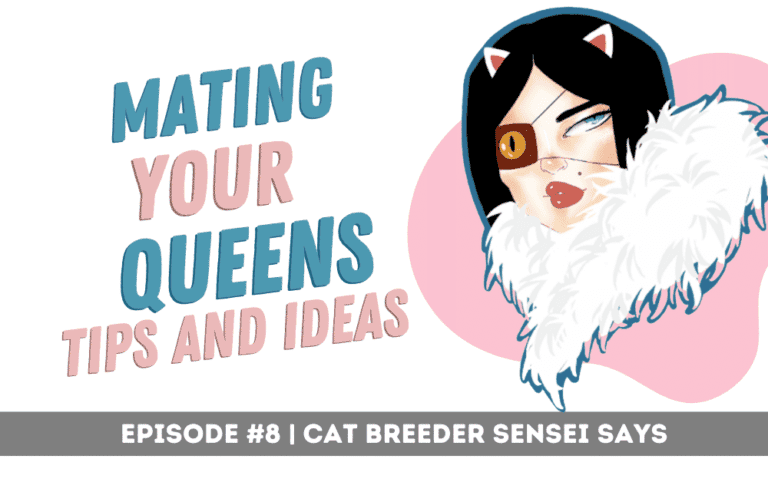




2 Comments